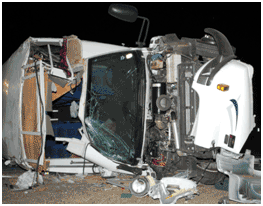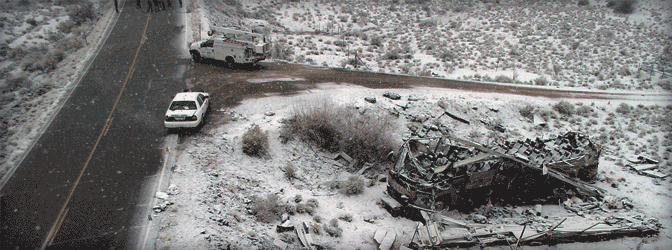What is the issue?
 Motorcoaches are among the safest vehicles on the road; they are rarely involved in highway accidents. However, motorcoaches transport 750 million passengers annually, with each bus carrying a substantial number of people. Therefore, when something does go wrong, more people are at risk of death or injury. As in any traffic crash, an occupant’s chance of surviving and avoiding injury increases when the person is retained in the vehicle, and particularly in his or her seating position. Without standards for roof strength, window glazing, and a protected seating area, motorcoach accidents can be catastrophic. Consider two high-profile accidents— the 2008 motorcoach accident in Sherman, TX and the 2009 motorcoach rollover near Mexican Hat, Utah—where the vehicle structures were significantly compromised, resulting in numerous passenger fatalities and serious injuries. Even when the motorcoach remains relatively intact during an accident, passengers lacking a protective seating environment can be thrown from their seating area and killed or injured.
Motorcoaches are among the safest vehicles on the road; they are rarely involved in highway accidents. However, motorcoaches transport 750 million passengers annually, with each bus carrying a substantial number of people. Therefore, when something does go wrong, more people are at risk of death or injury. As in any traffic crash, an occupant’s chance of surviving and avoiding injury increases when the person is retained in the vehicle, and particularly in his or her seating position. Without standards for roof strength, window glazing, and a protected seating area, motorcoach accidents can be catastrophic. Consider two high-profile accidents— the 2008 motorcoach accident in Sherman, TX and the 2009 motorcoach rollover near Mexican Hat, Utah—where the vehicle structures were significantly compromised, resulting in numerous passenger fatalities and serious injuries. Even when the motorcoach remains relatively intact during an accident, passengers lacking a protective seating environment can be thrown from their seating area and killed or injured.
What can be done . . .
Adequate standards for roof strength, window glazing, and occupant protection must be developed and implemented. These standards must ensure that the vehicles maintain survivable space for occupants during all types of crashes with significant crash forces, including rollovers. Manufacturers are moving ahead with various seating area safety options, such as seat belts, but the development and implementation of government standards is needed to ensure a consistent level of safety across the fleet. Motorcoach interiors should be more occupant friendly in order to prevent injury in the event of a crash. In addition, after a crash, occupants need to be able to identify exits and quickly leave the vehicle.

Related Reports
Title: Collision between Mission Consolidated Independent School District School Bus and Valley Coca-Cola bottling Company, Inc. Tractor-Semi Trailer Intersection of Bryan Road and Texas Farm-To-Market Road 676 Alton, TX, September 21, 1989.
NTSB Report Number: HAR-90-02, adopted on 7/17/1990 [Summary]
Title: Highway Accident Report: Greyhound Motorcoach Run-Off-The-Road Accident, Burnt Cabins, Pennsylvania June 20, 1998
NTSB Report Number: HAR-00-01, adopted on 1/5/2000 [Summary | PDF Document]
Title: Highway Accident Report: Motorcoach Run-Off-The-Road Accident, Tallulah, Louisiana October 13, 2003
NTSB Report Number: HAR-05-01, adopted on 4/19/2005 [Summary | PDF Document]
Title: Highway Accident Report: Motorcoach Fire on Interstate 45 During Hurricane Rita Evacuation, Near Wilmer, Texas, September 23, 2005
NTSB Report Number: HAR-07-01, adopted on 2/21/2007 [Summary | PDF Document]
Title: Highway Accident Report: Bus Loss of Control and Rollover, Dolan Springs, Arizona, January 30, 2009
NTSB Report Number: HAR-10-01, adopted on 6/22/2010 [Summary | PDF Document]
Title: Selective Motorcoach Issues
NTSB Report Number: SIR-99-01, adopted on 2/11/1999 [Summary | PDF Document]
Title: Highway Special Investigation Report: Bus Crashworthiness
NTSB Report Number: SIR-99-04, adopted on 9/21/1999 [Summary | PDF Document]
